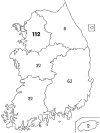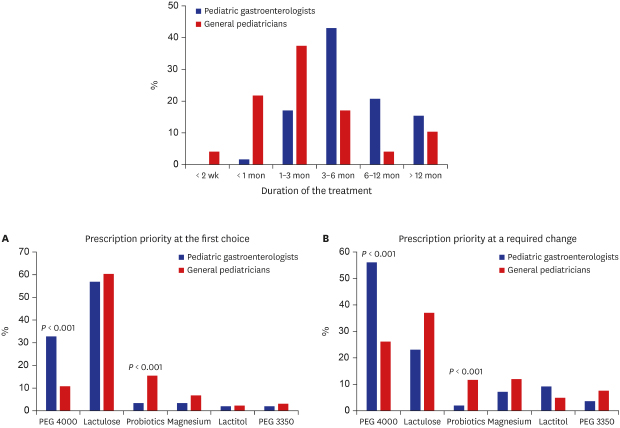1. Tabbers MM, DiLorenzo C, Berger MY, Faure C, Langendam MW, Nurko S, et al. Evaluation and treatment of functional constipation in infants and children: evidence-based recommendations from ESPGHAN and NASPGHAN. J Pediatr Gastroenterol Nutr. 2014; 58(2):258–274.
2. Mugie SM, Benninga MA, Di Lorenzo C. Epidemiology of constipation in children and adults: a systematic review. Best Pract Res Clin Gastroenterol. 2011; 25(1):3–18.
3. van den Berg MM, Benninga MA, Di Lorenzo C. Epidemiology of childhood constipation: a systematic review. Am J Gastroenterol. 2006; 101(10):2401–2409.

4. Rasquin A, Di Lorenzo C, Forbes D, Guiraldes E, Hyams JS, Staiano A, et al. Childhood functional gastrointestinal disorders: child/adolescent. Gastroenterology. 2006; 130(5):1527–1537.

5. Koppen IJ, Nurko S, Saps M, Di Lorenzo C, Benninga MA. The pediatric Rome IV criteria: what's new? Expert Rev Gastroenterol Hepatol. 2017; 11(3):193–201.

6. Hyams JS, Di Lorenzo C, Saps M, Shulman RJ, Staiano A, van Tilburg M. Childhood functional gastrointestinal disorders: child/adolescent. Gastroenterology. 2016; 150(6):1456–1468.e2.

7. Benninga MA, Faure C, Hyman PE, St James Roberts I, Schechter NL, Nurko S. Childhood functional gastrointestinal disorders: neonate/toddler. Gastroenterology. 2016; 150(6):1443–1455.e2.

8. Scarpato E, Quitadamo P, Roman E, Jojkic-Pavkov D, Kolacek S, Papadopoulou A, et al. Functional gastrointestinal disorders in children: a survey on clinical approach in the Mediterranean area. J Pediatr Gastroenterol Nutr. 2017; 64(6):e142–e146.

9. Sperber AD, Gwee KA, Hungin AP, Corazziari E, Fukudo S, Gerson C, et al. Conducting multinational, cross-cultural research in the functional gastrointestinal disorders: issues and recommendations. A Rome Foundation working team report. Aliment Pharmacol Ther. 2014; 40(9):1094–1102.

10. Borowitz SM, Cox DJ, Kovatchev B, Ritterband LM, Sheen J, Sutphen J. Treatment of childhood constipation by primary care physicians: efficacy and predictors of outcome. Pediatrics. 2005; 115(4):873–877.

11. Koppen IJ, Vriesman MH, Tabbers MM, Di Lorenzo C, Benninga MA. Awareness and implementation of the 2014 ESPGHAN/NASPGHAN guideline for childhood functional constipation. J Pediatr Gastroenterol Nutr. 2018; 66(5):732–737.

12. Hyams J, Colletti R, Faure C, Gabriel-Martinez E, Maffei HV, Morais MB, et al. Functional gastrointestinal disorders: Working Group Report of the First World Congress of Pediatric Gastroenterology, Hepatology, and Nutrition. J Pediatr Gastroenterol Nutr. 2002; 35:Suppl 2. S110–S117.

13. Trivić I, Hojsak I. Initial diagnosis of functional gastrointestinal disorders in children increases a chance for resolution of symptoms. Pediatr Gastroenterol Hepatol Nutr. 2018; 21(4):264–270.

14. Focht DR 3rd, Baker RC, Heubi JE, Moyer MS. Variability in the management of childhood constipation. Clin Pediatr (Phila). 2006; 45(3):251–256.

15. Yang CH, Punati J. Practice patterns of pediatricians and trainees for the management of functional constipation compared with 2006 NASPGHAN guidelines. J Pediatr Gastroenterol Nutr. 2015; 60(3):308–311.

16. Bekkali NL, van den Berg MM, Dijkgraaf MG, van Wijk MP, Bongers ME, Liem O, et al. Rectal fecal impaction treatment in childhood constipation: enemas versus high doses oral PEG. Pediatrics. 2009; 124(6):e1108–15.

17. Hasosah M, Telmesani A, Al-Binali A, Sarkhi A, Alghamdi S, Alquair K, et al. Knowledge and practice styles of pediatricians in Saudi Arabia regarding childhood constipation. J Pediatr Gastroenterol Nutr. 2013; 57(1):85–92.

18. Burgers RE, Mugie SM, Chase J, Cooper CS, von Gontard A, Rittig CS, et al. Management of functional constipation in children with lower urinary tract symptoms: report from the Standardization Committee of the International Children's Continence Society. J Urol. 2013; 190(1):29–36.

19. Widodo A, Hegar B, Vandenplas Y. Pediatricians lack knowledge for the diagnosis and management of functional constipation in children over 6 mo of age. World J Clin Pediatr. 2018; 7(1):56–61.

20. Bekkali NL, Hoekman DR, Liem O, Bongers ME, van Wijk MP, Zegers B, et al. Polyethylene glycol 3350 with electrolytes versus polyethylene glycol 4000 for constipation: a randomized, controlled trial. J Pediatr Gastroenterol Nutr. 2018; 66(1):10–15.

21. Thomson MA, Jenkins HR, Bisset WM, Heuschkel R, Kalra DS, Green MR, et al. Polyethylene glycol 3350 plus electrolytes for chronic constipation in children: a double blind, placebo controlled, crossover study. Arch Dis Child. 2007; 92(11):996–1000.

22. Nurko S, Youssef NN, Sabri M, Langseder A, McGowan J, Cleveland M, et al. PEG3350 in the treatment of childhood constipation: a multicenter, double-blinded, placebo-controlled trial. J Pediatr. 2008; 153(2):254–261.

23. Gordon M, Naidoo K, Akobeng AK, Thomas AG. Osmotic and stimulant laxatives for the management of childhood constipation. Cochrane Database Syst Rev. 2012; (7):CD009118.

24. Koppen IJ, Benninga MA, Tabbers MM. Is there a role for pre-, pro- and synbiotics in the treatment of functional constipation in children? A systematic review. J Pediatr Gastroenterol Nutr. 2016; 63:Suppl 1. S27–35.
25. Koppen IJ, Kuizenga-Wessel S, Lu PL, Benninga MA, Di Lorenzo C, Lane VA, et al. Surgical decision-making in the management of children with intractable functional constipation: What are we doing and are we doing it right? J Pediatr Surg. 2016; 51(10):1607–1612.

26. Chmielewska A, Szajewska H. Systematic review of randomised controlled trials: probiotics for functional constipation. World J Gastroenterol. 2010; 16(1):69–75.
27. Koppen IJ, Lammers LA, Benninga MA, Tabbers MM. Management of functional constipation in children: therapy in practice. Paediatr Drugs. 2015; 17(5):349–360.

28. Pijpers MA, Bongers ME, Benninga MA, Berger MY. Functional constipation in children: a systematic review on prognosis and predictive factors. J Pediatr Gastroenterol Nutr. 2010; 50(3):256–268.

29. Burgers R, Bonanno E, Madarena E, Graziano F, Pensabene L, Gardner W, et al. The care of constipated children in primary care in different countries. Acta Paediatr. 2012; 101(6):677–680.

30. Kokke FT, Scholtens PA, Alles MS, Decates TS, Fiselier TJ, Tolboom JJ, et al. A dietary fiber mixture versus lactulose in the treatment of childhood constipation: a double-blind randomized controlled trial. J Pediatr Gastroenterol Nutr. 2008; 47(5):592–597.

31. Quitadamo P, Coccorullo P, Giannetti E, Romano C, Chiaro A, Campanozzi A, et al. A randomized, prospective, comparison study of a mixture of acacia fiber, psyllium fiber, and fructose vs polyethylene glycol 3350 with electrolytes for the treatment of chronic functional constipation in childhood. J Pediatr. 2012; 161(4):710–715.e1.

32. Weber TK, Toporovski MS, Tahan S, Neufeld CB, de Morais MB. Dietary fiber mixture in pediatric patients with controlled chronic constipation. J Pediatr Gastroenterol Nutr. 2014; 58(3):297–302.

33. Bae SH, Son JS, Lee R. Effect of fluid intake on the outcome of constipation in children: PEG 4000 versus lactulose. Pediatr Int. 2010; 52(4):594–597.

34. Tabbers MM, Benninga MA. Constipation in children: fibre and probiotics. BMJ Clin Evid. 2015; 2015:pii: 0303.










 Citation
Citation Print
Print




 XML Download
XML Download